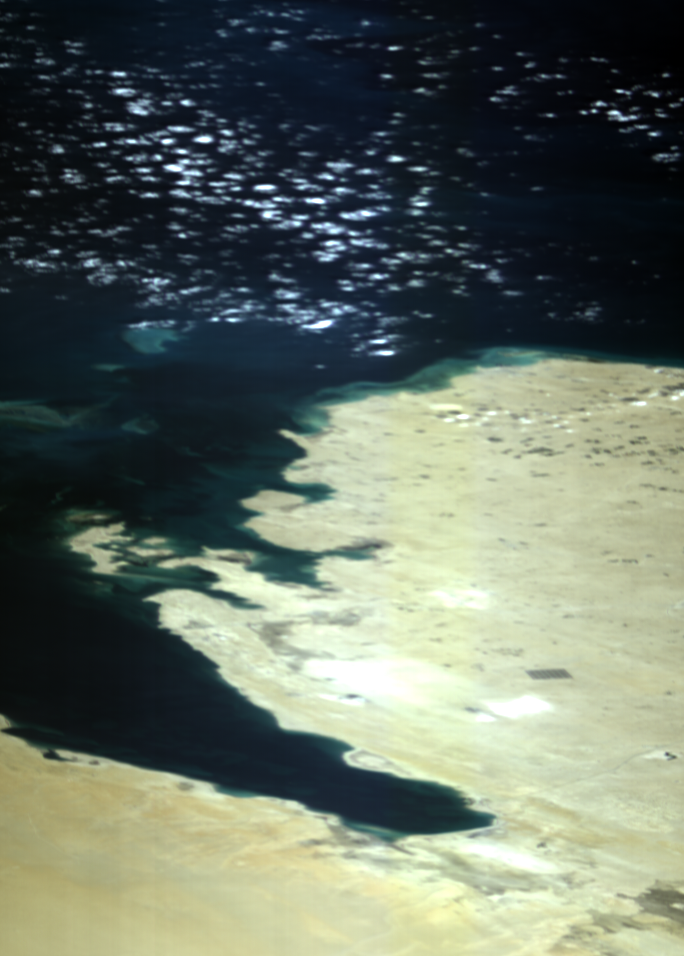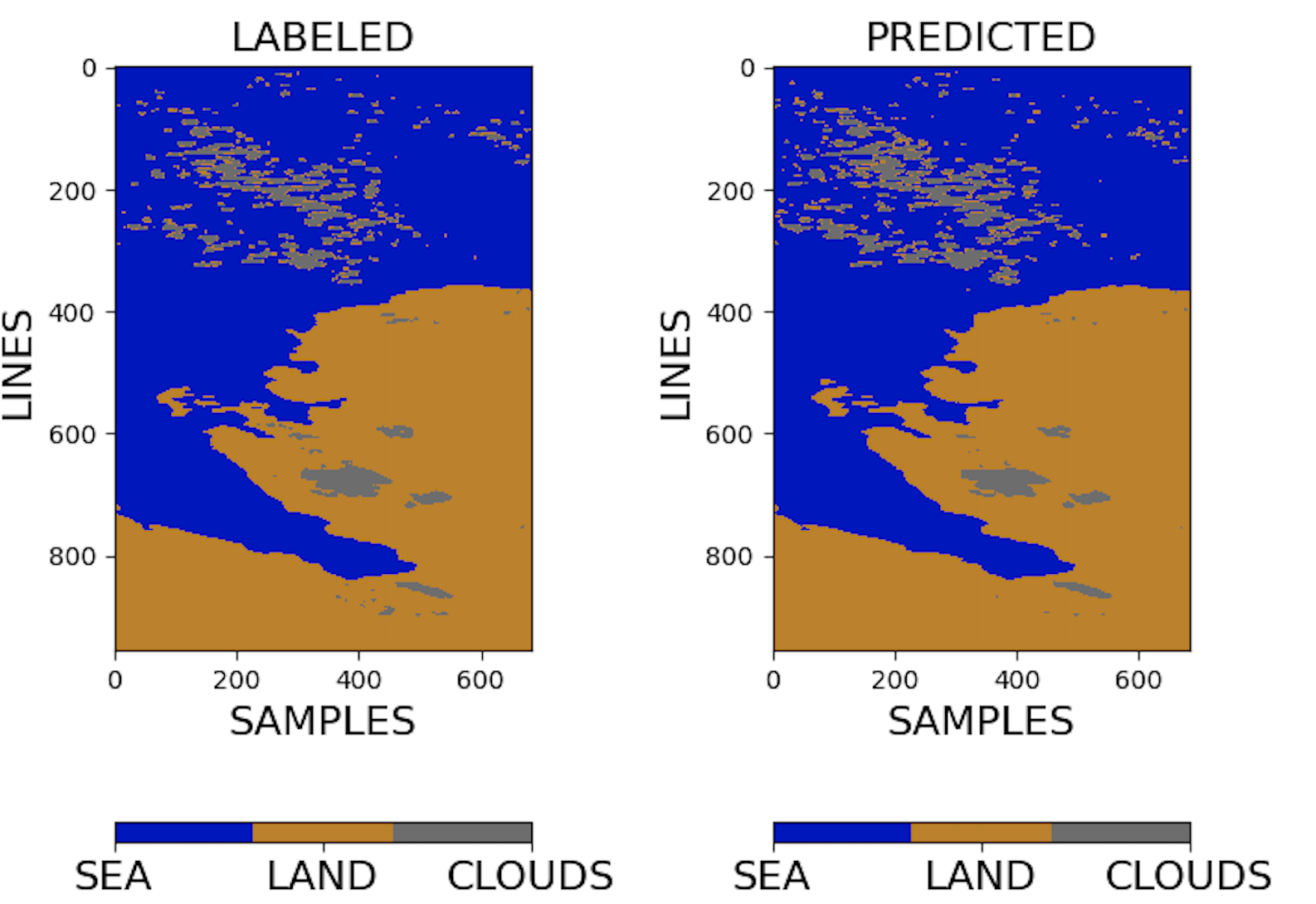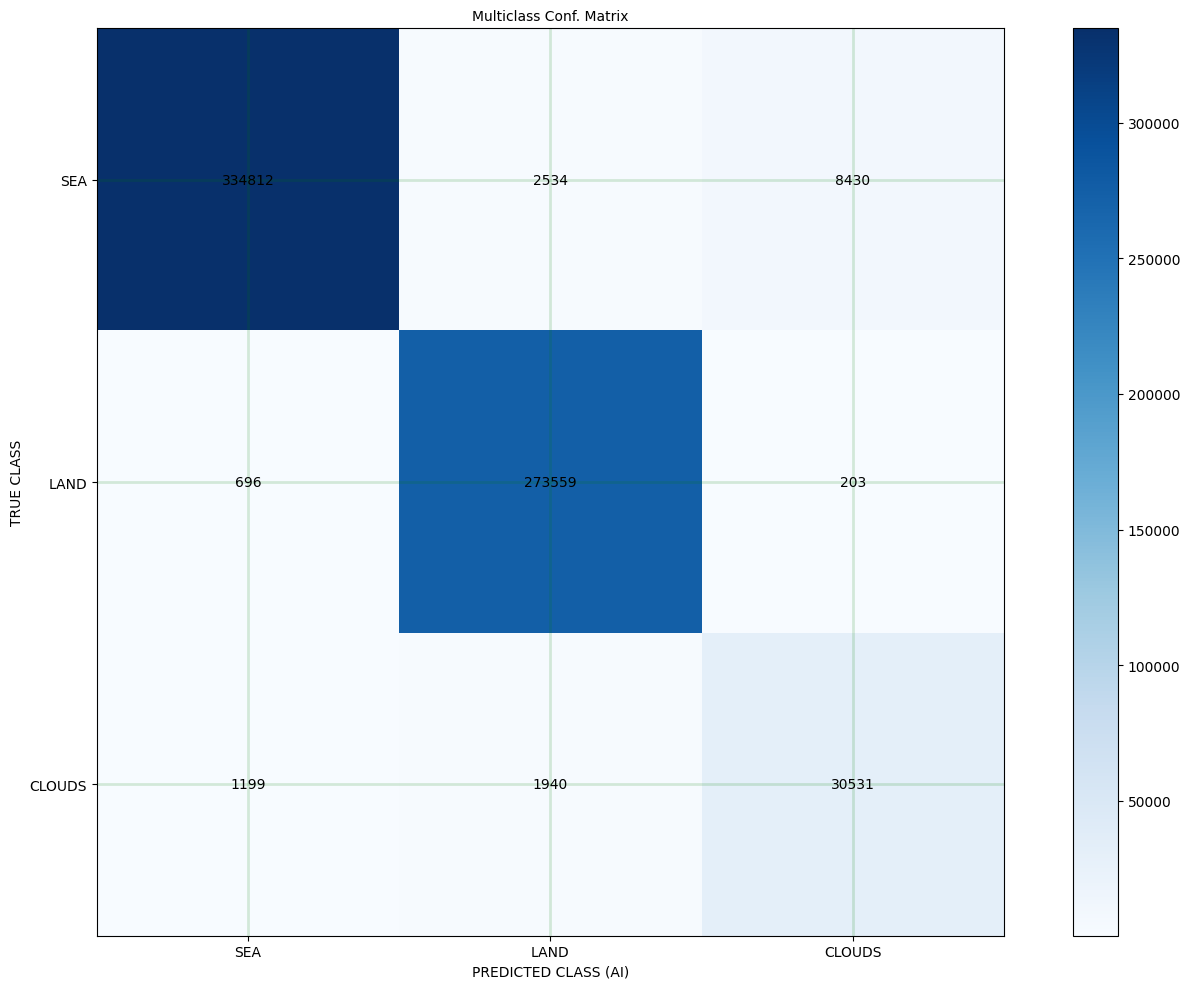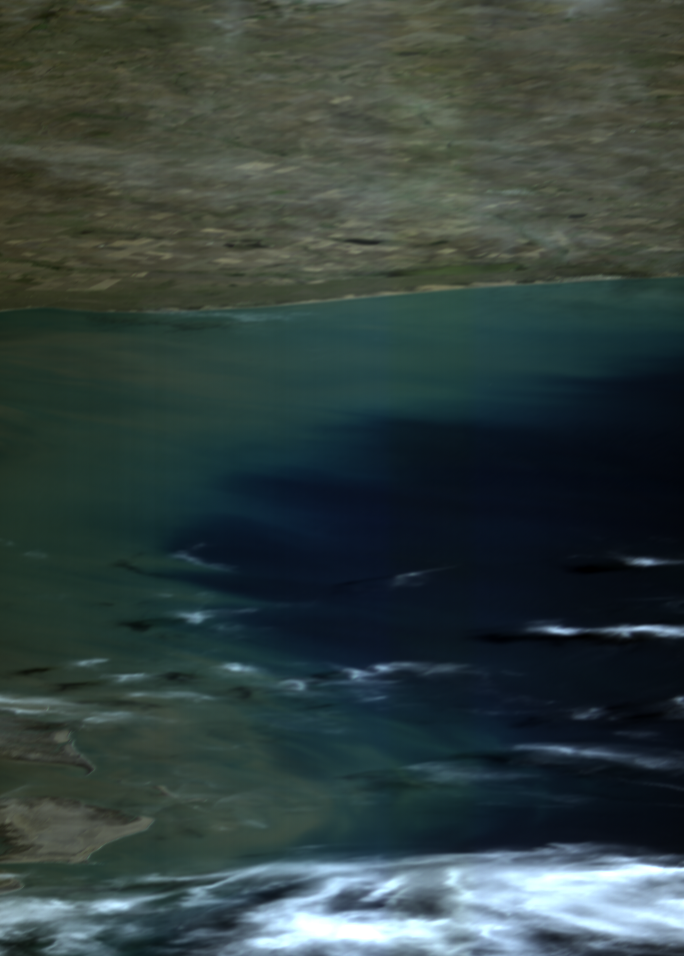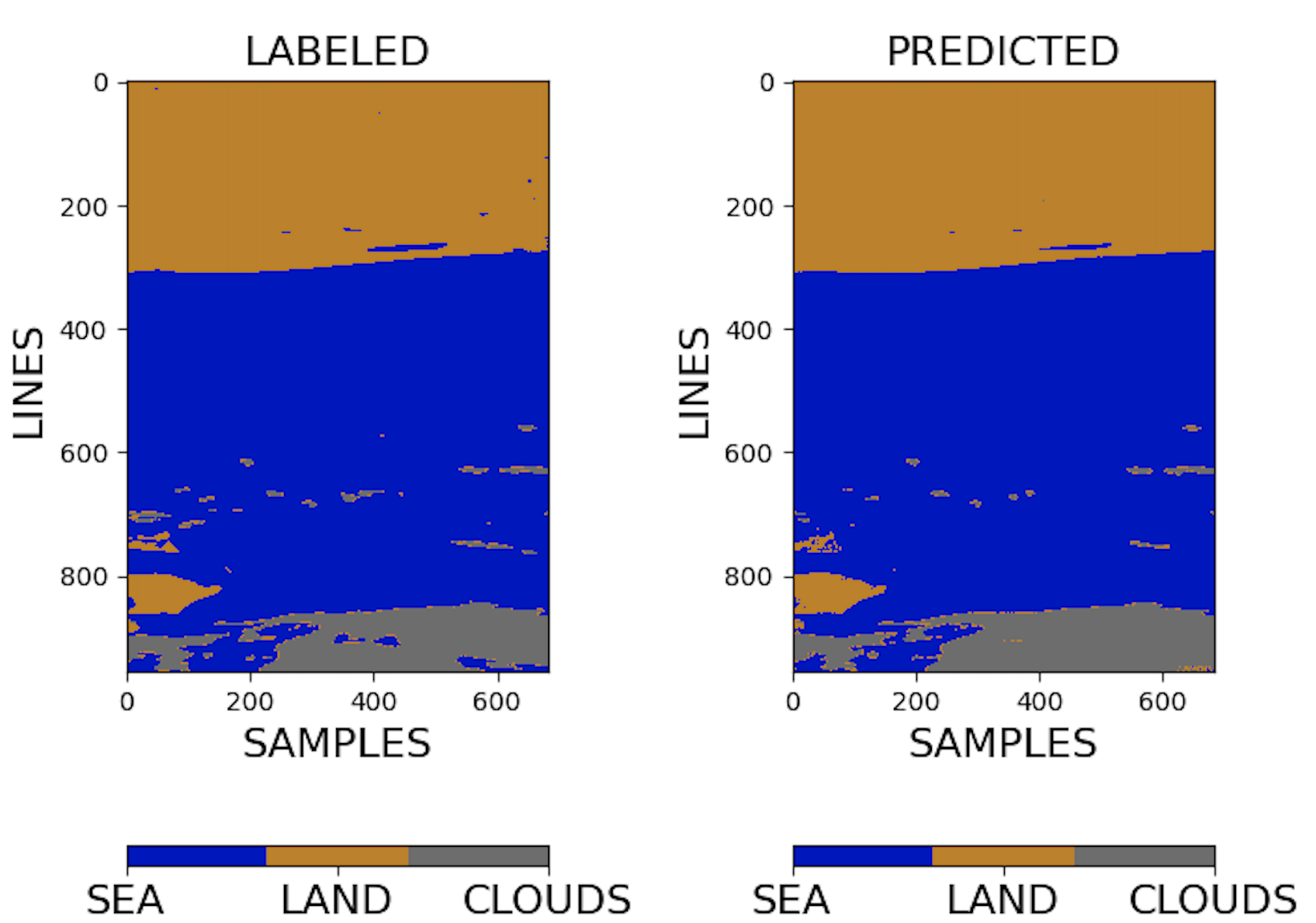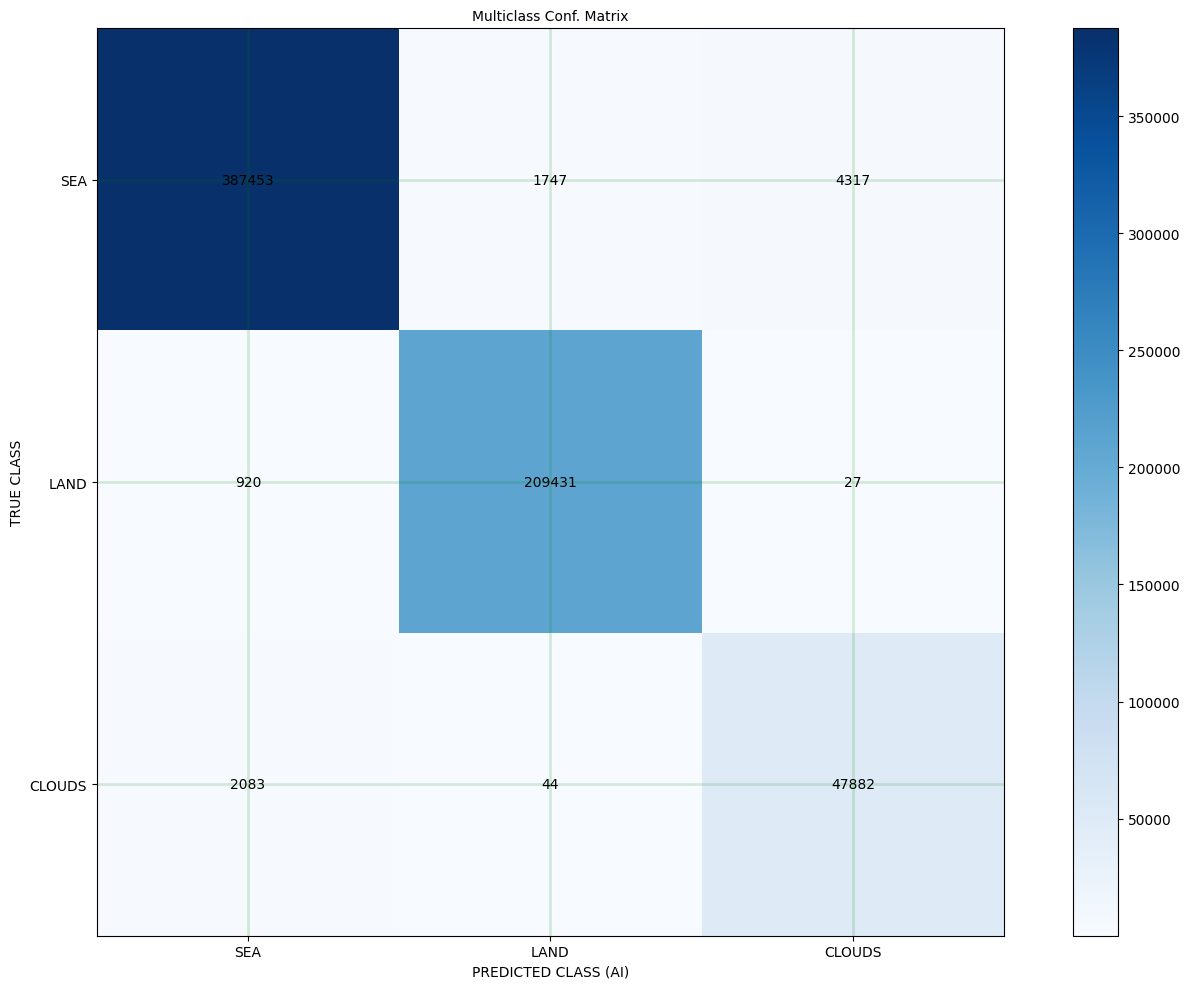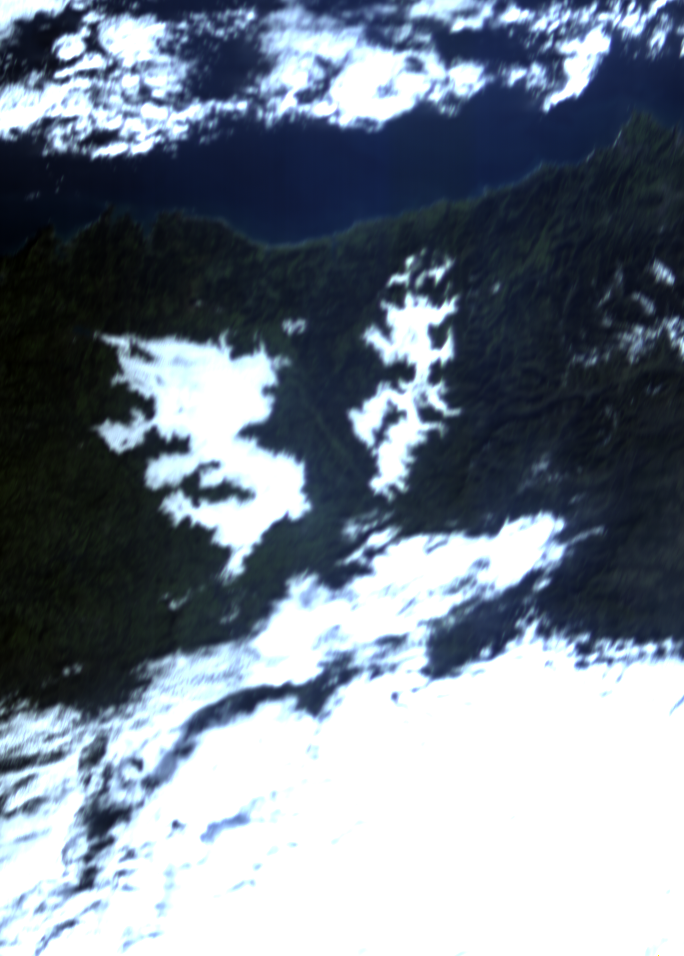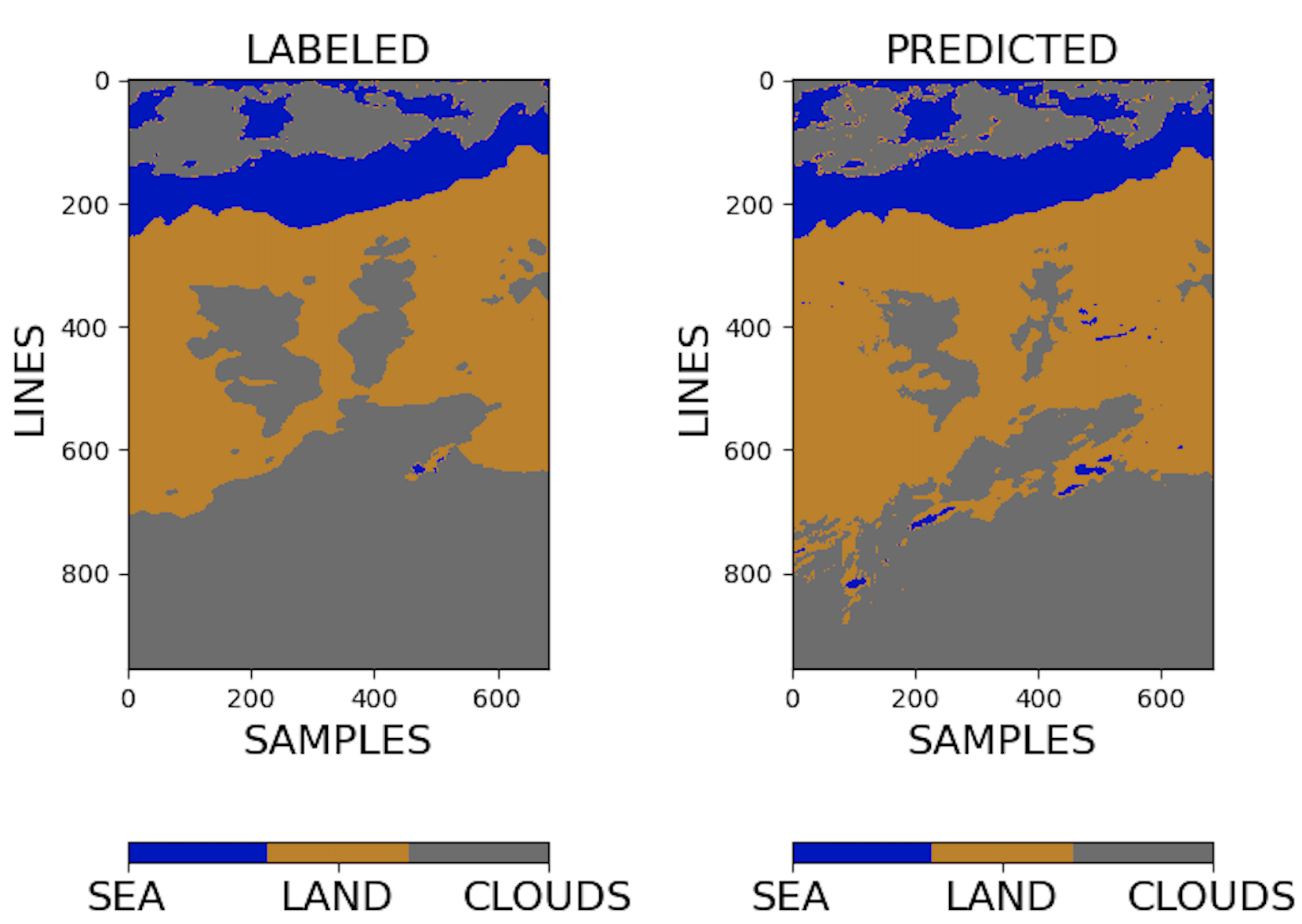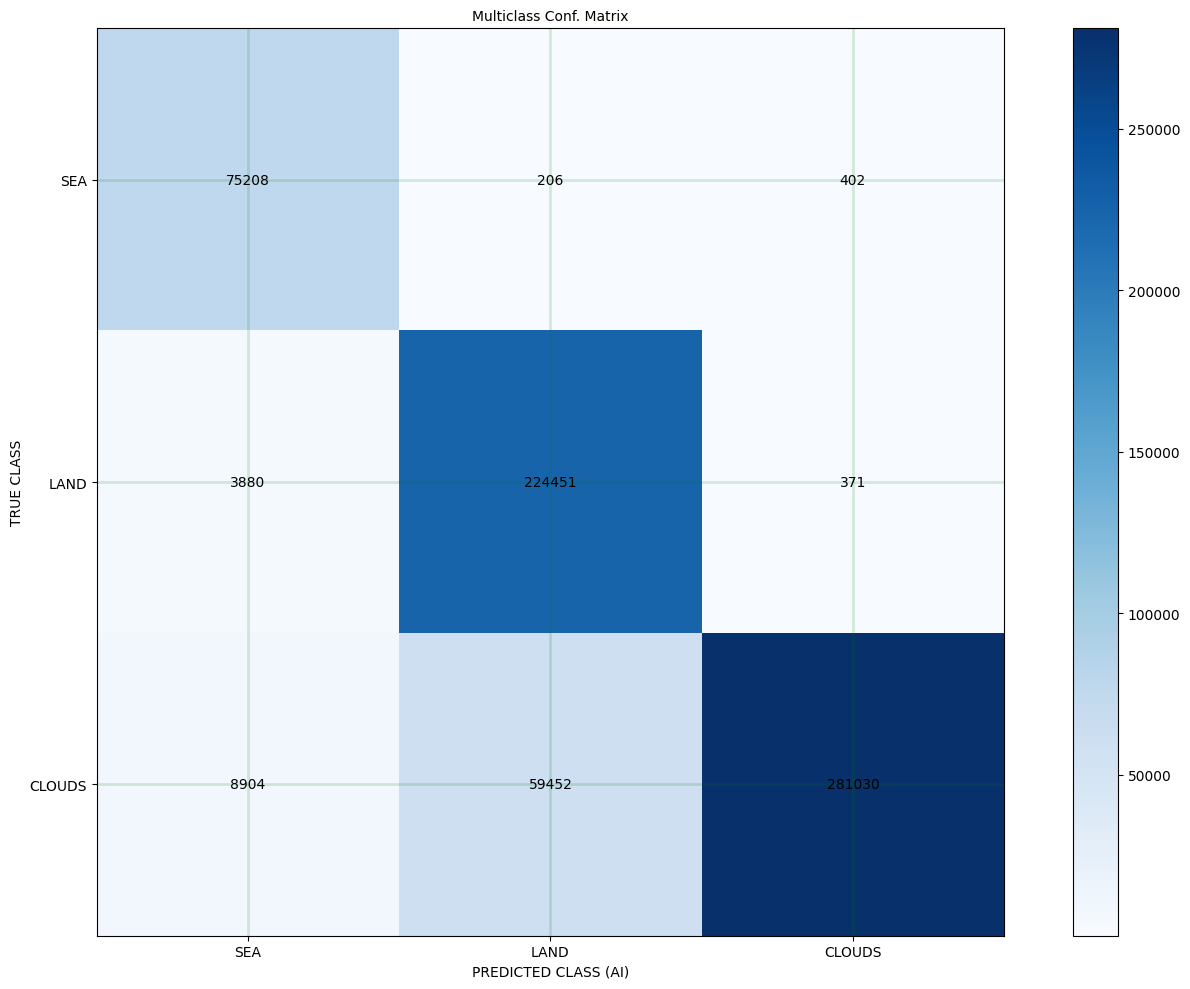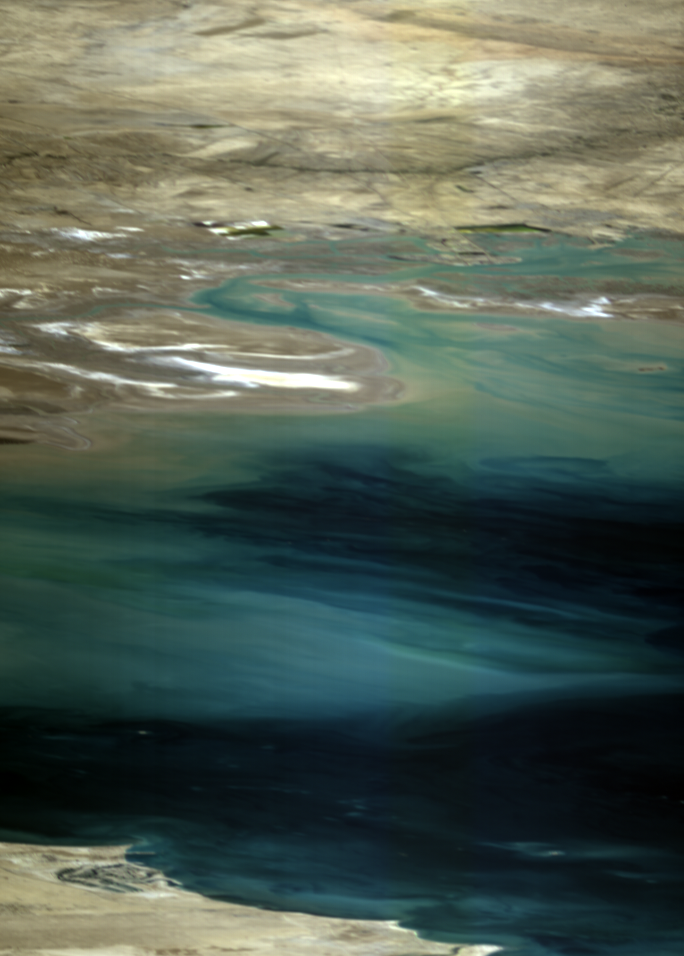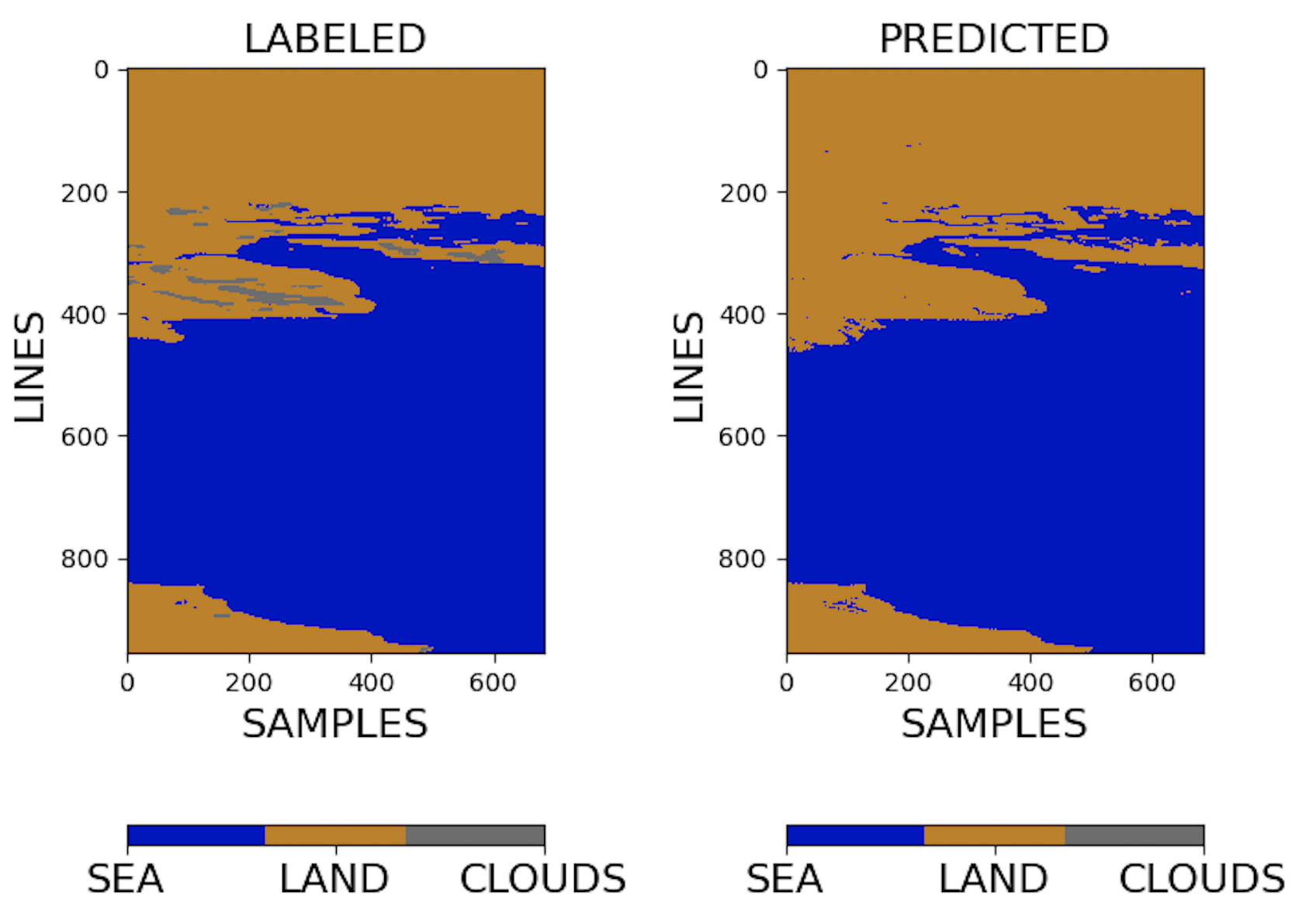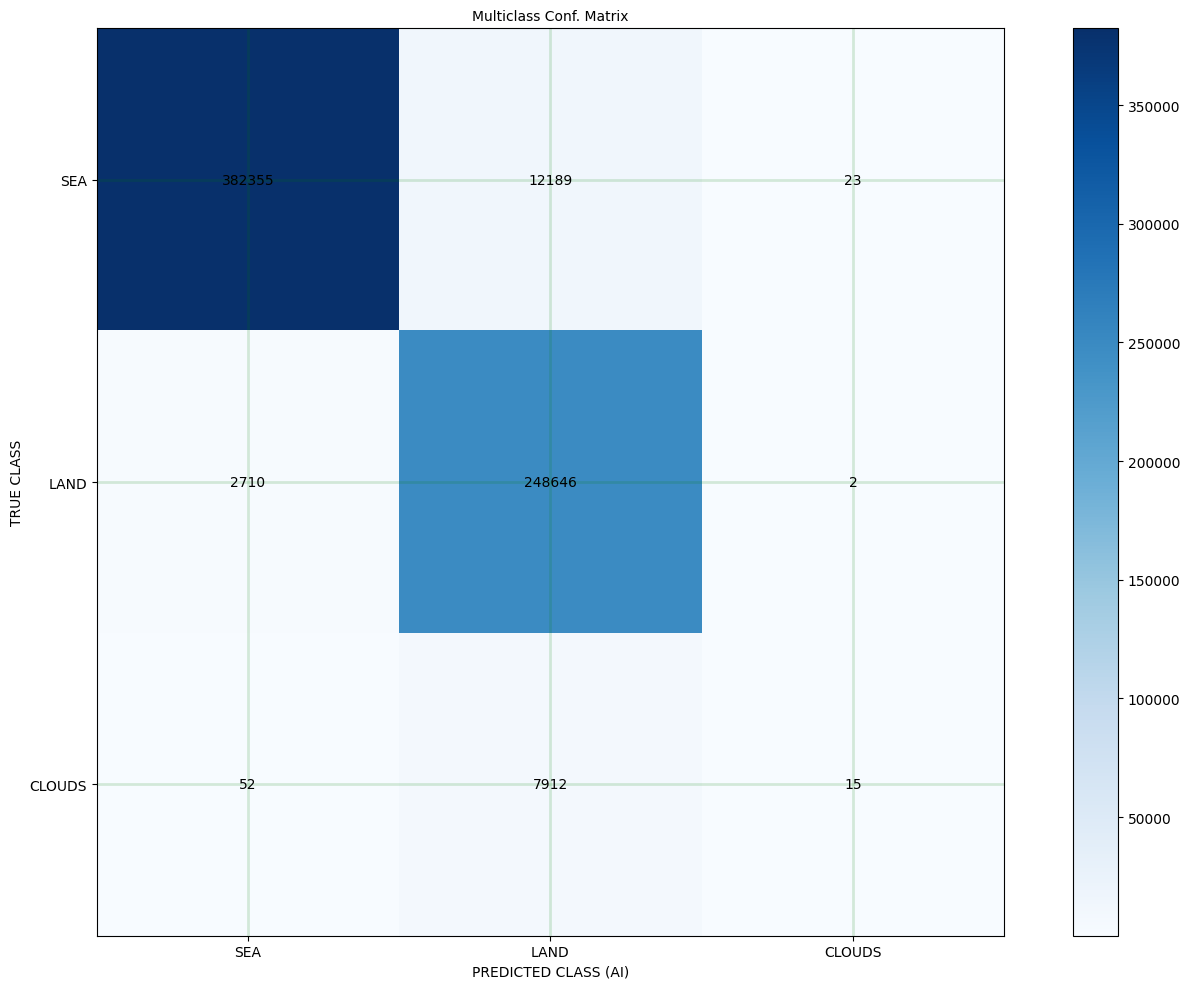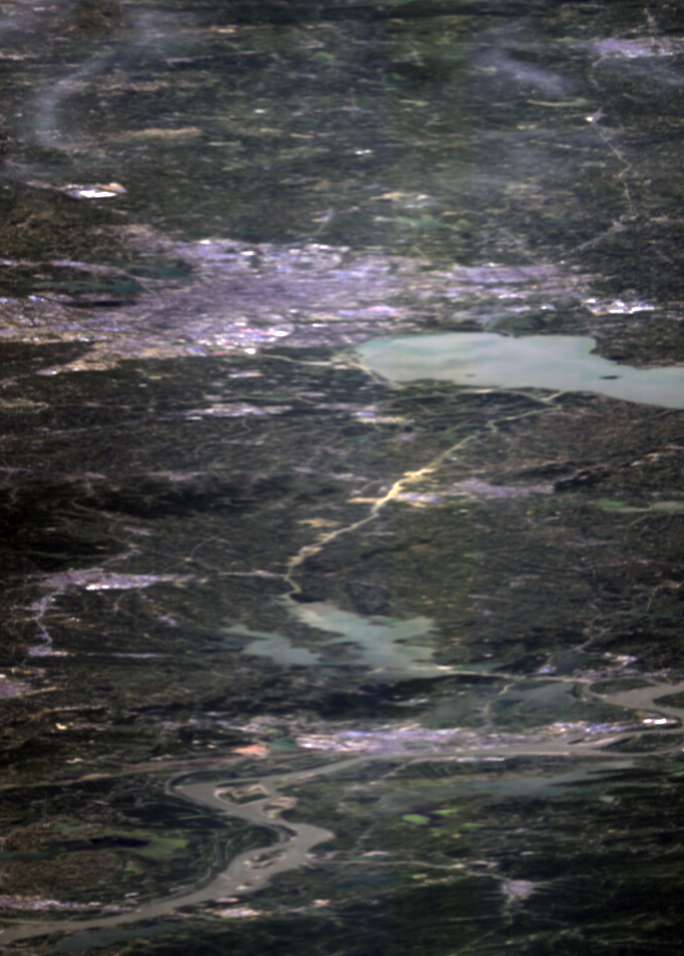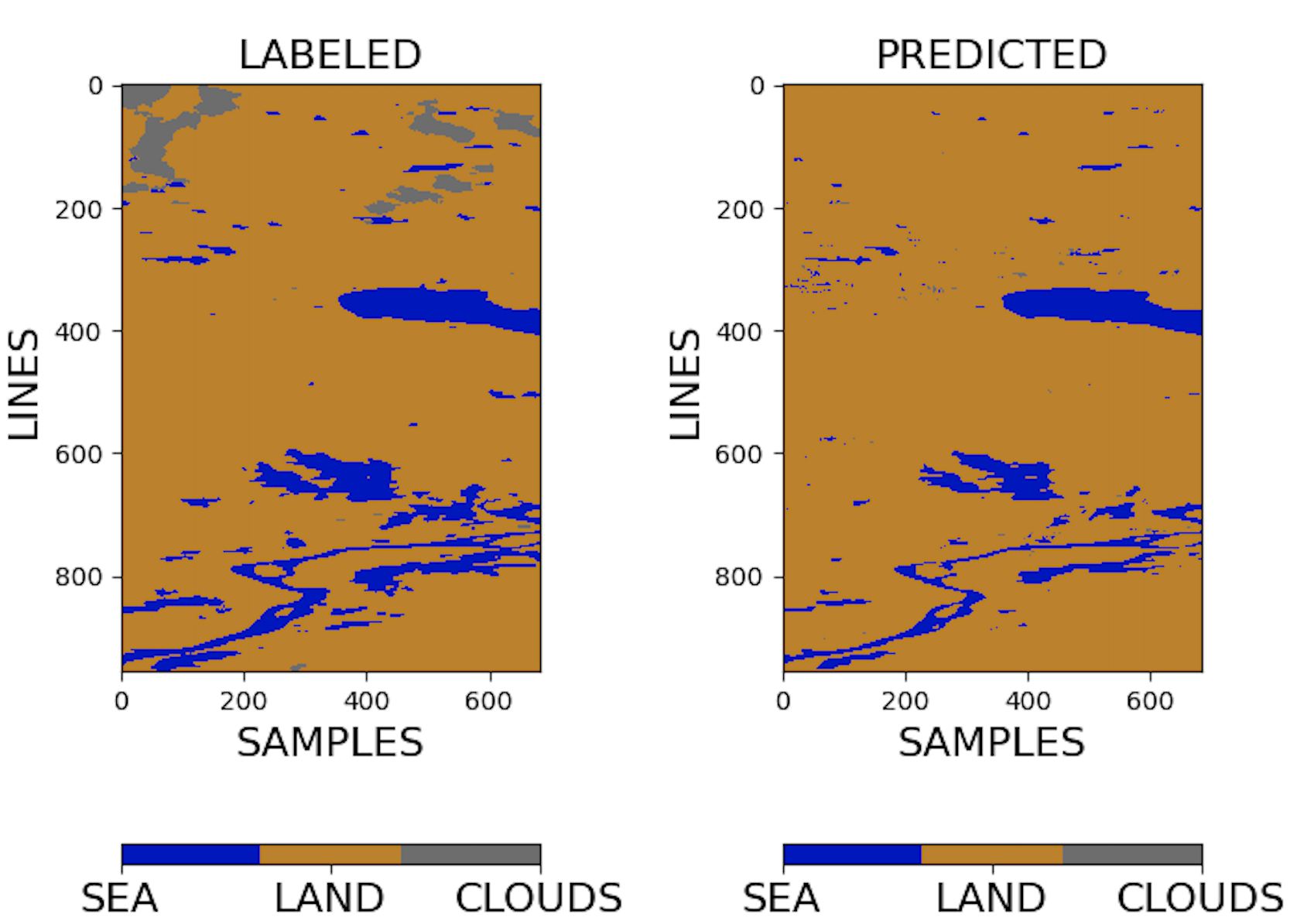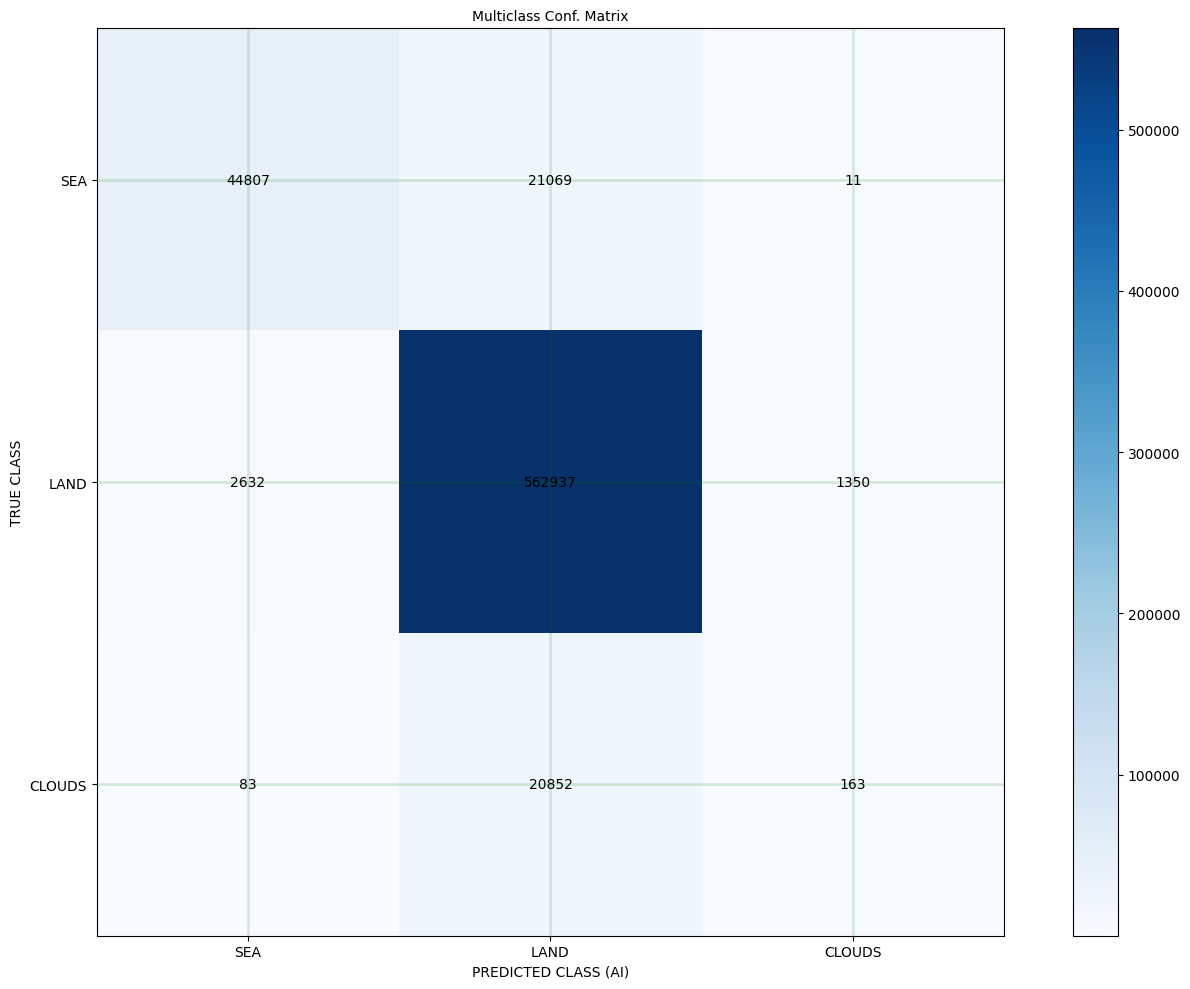A Classification Deep Learning Model on the HYPSO-1 Dataset
To demonstrate the significance of our dataset for Earth and ocean observation, HSI data processing and sea/land/clouds classification tasks, we adapt the following 1D Fully Convolutional Network (FCN) architecture to tackle this classification problem. The 1D FCN, originally designed for regression-based predictions of e.g. clay content in soil spectroscopy, as detailed in previous works (2018) was later adapted to address classification tasks for soil texture, as explained in the state of the art (2019). In our work, as depicted in the figure below, we employ the 2019 architecture, but we make several adjustments to its hyper-parameters to boost its performance on our dataset. Contrary to the 2019 classification model which utilizes four convolutions with 32, 32, 64, and 64 kernels (all of size 3), our convolutions are expanded to 32, 64, 96, and 128 kernels, increasing the kernel size to 6 for each filter to enhance our neural network’s efficacy. Despite using more and larger kernels, our model, with 124,163 parameters trained using categorical cross-entropy loss over one epoch in 300-pixel batches on raw data excluding the first and last three noisy channels, remains relatively simple. This suggests the model is apt for inference, suitable both for on-ground processing and for the System-on-Chip (SoC) software on-board the HYPSO-1 platform. As we elaborate next in this page, our adapted 1D FCN model applied to the HYPSO-1 Sea-Land-Cloud-Labeled Dataset achieves substantially higher scores compared to the existing literature.

